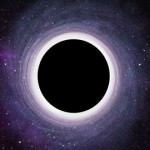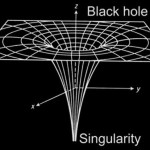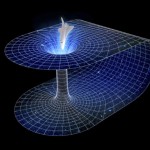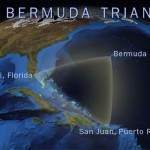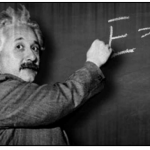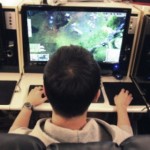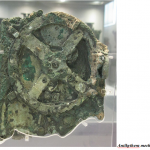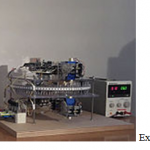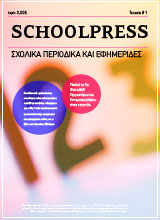By Kepenos Alexandros & Andonopoulos Marios (A Class)
The Bermuda Triangle, is a loosely-defined region in the western part of the North Atlantic Ocean, more specifically, it is an area roughly bounded by Miami, Bermuda and Puerto Rico, where a number of aircraft and ships are said to have disappeared under mysterious circumstances, earning it the name “The Devil’s Triangle”. Most reputable sources dismiss the idea that there is any mystery. The vicinity of the Bermuda Triangle is one of the most heavily travelled shipping lanes in the world, with ships frequently crossing through it for ports in the America, Europe, and the Caribbean islands and commercial and private aircrafts routinely fly over it.

Cruise ships and pleasure crafts regularly sail through the region, The Bermuda Triangle’s bad reputation started with Christopher Columbus. According to his log, on October 8, 1492, Columbus looked down at his compass and noticed that it was giving weird readings. He didn’t alert his crew at first, because having a compass that didn’t point to magnetic north may have sent the already-on-edge crew into a panic. This was probably a good decision considering three days later when Columbus simply spotted a strange light, the crew threatened to return to Spain.
Notable Incidents
· USS Cyclops: the collier USS Cyclops, carrying a full load of manganese ore and with one engine out of action, went missing without a trace with a crew of 309 sometime after March 4, 1918, after departing from the island of Barbados. Although there is no strong evidence for any single theory, many theories exist, some blaming storms, some capsizing, and some suggesting that wartime enemy activity was to blame for the loss.
· Carroll A. Deering: A five-masted schooner built in 1919, the Carroll A. Deering was found hard aground and abandoned at Diamond Shoalson January 31, 1921. Rumors at the time indicated that the Deering was a victim of piracy, possibly connected with the illegal rum-running trade during Prohibition.
· Star Tiger and Star Ariel: G-AHNP Star Tiger disappeared on January 30, 1948, on a flight from the Azores to Bermuda; G-AGRE Star Ariel disappeared on January 17, 1949, on a flight from Bermuda to Kingston, Jamaica. Both were Avro Tudor IV passenger aircraft operated by British South American Airways. Both planes were operating at the very limits of their range and the slightest error or fault in the equipment could keep them from reaching the small island. One plane was not heard from long before it would have entered the Triangle.
· Douglas DC-3: On December 28, 1948, a Douglas DC-3 aircraft, number NC16002, disappeared while on a flight from San Juan, Puerto Rico, to Miami. No trace of the aircraft or the 32 people on board was ever found. A Civil Aeronautics Board investigation found there was insufficient information available on which to determine probable cause of the disappearance.
· KC-135 Stratotankers: On August 28, 1963, a pair of US Air Force KC-135 Stratotankers aircraft collided and crashed into the Atlantic. The Triangle version of this story specifies that they did collide and crash, but there were two distinct crash sites, separated by over 160 miles (260 km) of water. However, Kusche’s research showed that the unclassified version of the Air Force investigation report stated that the debris field defining the second «crash site» was examined by a search and rescue ship, and found to be a mass of seaweed and driftwood tangled in an old buoy.
· Flight 19: Flight 19 was a training flight of five TBM Avenger torpedo bombers that disappeared on December 5, 1945, while over the Atlantic. The squadron’s flight plan was scheduled to take them due east from Fort Lauderdale for 141 miles, north for 73 miles, and then back over a final 140-mile leg to complete the exercise. The flight never returned to base. The disappearance is attributed by Navy investigators to navigational error leading to the aircraft running out of fuel. A tanker off the coast of Florida reported seeing an explosionand observing a widespread oil slick when fruitlessly searching for survivors. The weather was becoming stormy by the end of the incident.
Many people attribute these disappearances to anomalous phenomena like gigantic sea creatures/monsters or like giant squids or giant octopuses. Moreover, many people advocate that an amount of these disappearances are occurred by aliens or other unknown beings. Also, some people think that some defense mechanism of the Atlantis Island has contributed to these disappearances. All these are just myths and the reality behind the Bermuda Triangle myth is far more prosaic. They argue that a sometimes-treacherous Mother Nature, human error, shoddy craftsmanship or design, and just plain bad luck can explain the many disappearances.
Natural Explanations
This and other reported compass issues in the region gave rise to the myth that compasses will all be off in the Triangle, which isn’t correct, or at least is an exaggeration of what is actually happening as you’ll see. Despite this, in 1970 the U.S. Coast Guard, attempting to explain the reasons for disappearances in the Triangle, stated:
The majority of disappearances can be attributed to the area’s unique features. The Gulf Stream, a warm ocean current flowing from the Gulf of Mexico around the Florida Straits northeastward toward Europe, is extremely swift and turbulent. It can quickly erase any evidence of a disaster.
The unpredictable Caribbean-Atlantic storms that give birth to waves of great size as well as waterspouts often spell disaster for pilots and mariners. We should also consider that the area is in a hurricane alley. The topography of the ocean floor varies from extensive shoals to some of the deepest marine trenches in the world. With the interaction of strong currents over reefs, the topography is in a constant state of flux and breeds development of new navigational hazards.
Not to be underestimated is the human factor. A large number of pleasure boats travel the water between Florida’s Gold Coast (the most densely populated area in the world) and the Bahamas. All too often, crossings are attempted with too small a boat, insufficient knowledge of the area’s hazards and lack of good seamanship.
In addition, another natural factor that may contribute to these disappearances is the large fields of methane hydrates (a form of natural gas) on the continental shelves. Laboratory experiments carried out in Australia have proven that bubbles can, indeed, sink a scale model ship by decreasing the density of the water. In this way, any wreckage consequently rising to the surface would be rapidly dispersed by the Gulf Stream. It has been hypothesized that periodic methane eruptions may produce regions of frothy water that are no longer capable of providing adequate buoyancy for ships. If something like that happens, the ships would be sunk rapidly.
Paranormal Explanations
Triangle writers have used a number of supernatural concepts to explain the events. One explanation pins the blame on leftover technology from the mythical lost continent of Atlantis. Sometimes connected to the Atlantis story is the submerged rock formation known as the Bimini Road off the island of Bimini in the Bahamas, which is in the Triangle by some definitions. Followers of the purported psychic Edgar Cayce take his prediction that evidence of Atlantis would be found in 1968 as referring to the discovery of the Bimini Road. Believers describe the formation as a road, wall, or other structure, but the Bimini Road is of natural origin.
Other writers attribute the events to UFOs. This idea was used by Steven Spielberg for his science fiction film Close Encounters of the Third Kind, which features the lost Flight 19 aircrews as alien abductees. Charles Berlitz, author of various books on anomalous phenomena, lists several theories attributing the losses in the Triangle to anomalous or unexplained forces.

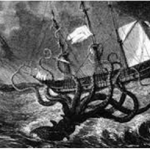
To sum up, the myth that is behind the Bermuda Triangle is just a myth and many natural explanations have proven that.
SOURCES:
https://en.wikipedia.org/wiki/Bermuda_Triangle
http://www.history.com/topics/bermuda-triangle
http://news.nationalgeographic.com/news/2002/12/1205_021205_bermudatriangle.html
http://www.nytimes.com/fodors/top/features/travel/destinations/bermudaandcaribbean/bermuda/fdrs_feat_29_8.html?n=Top%2FFeatures%2FTravel%2FDestinations%2FBermuda+and+Caribbean%2FBermuda




